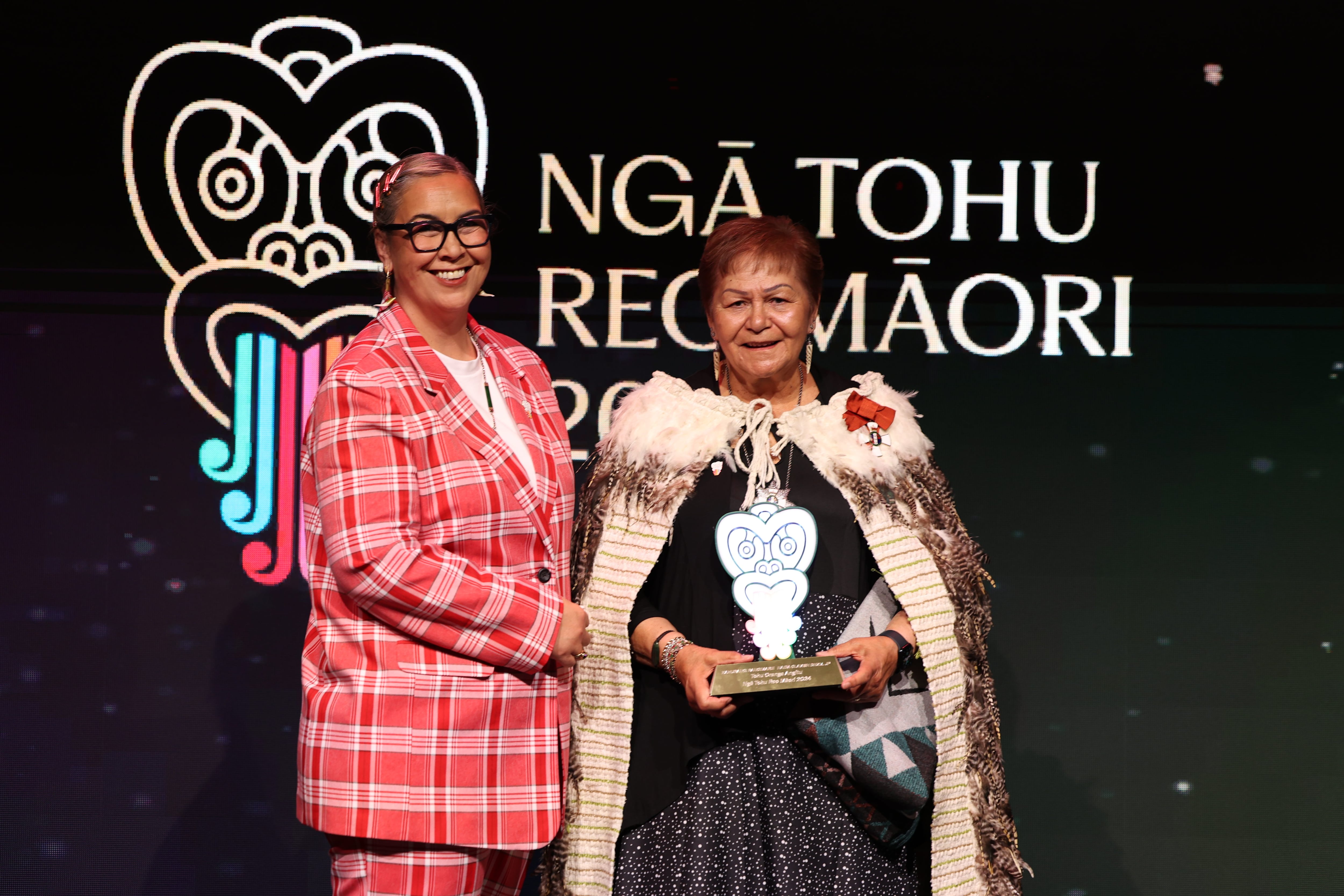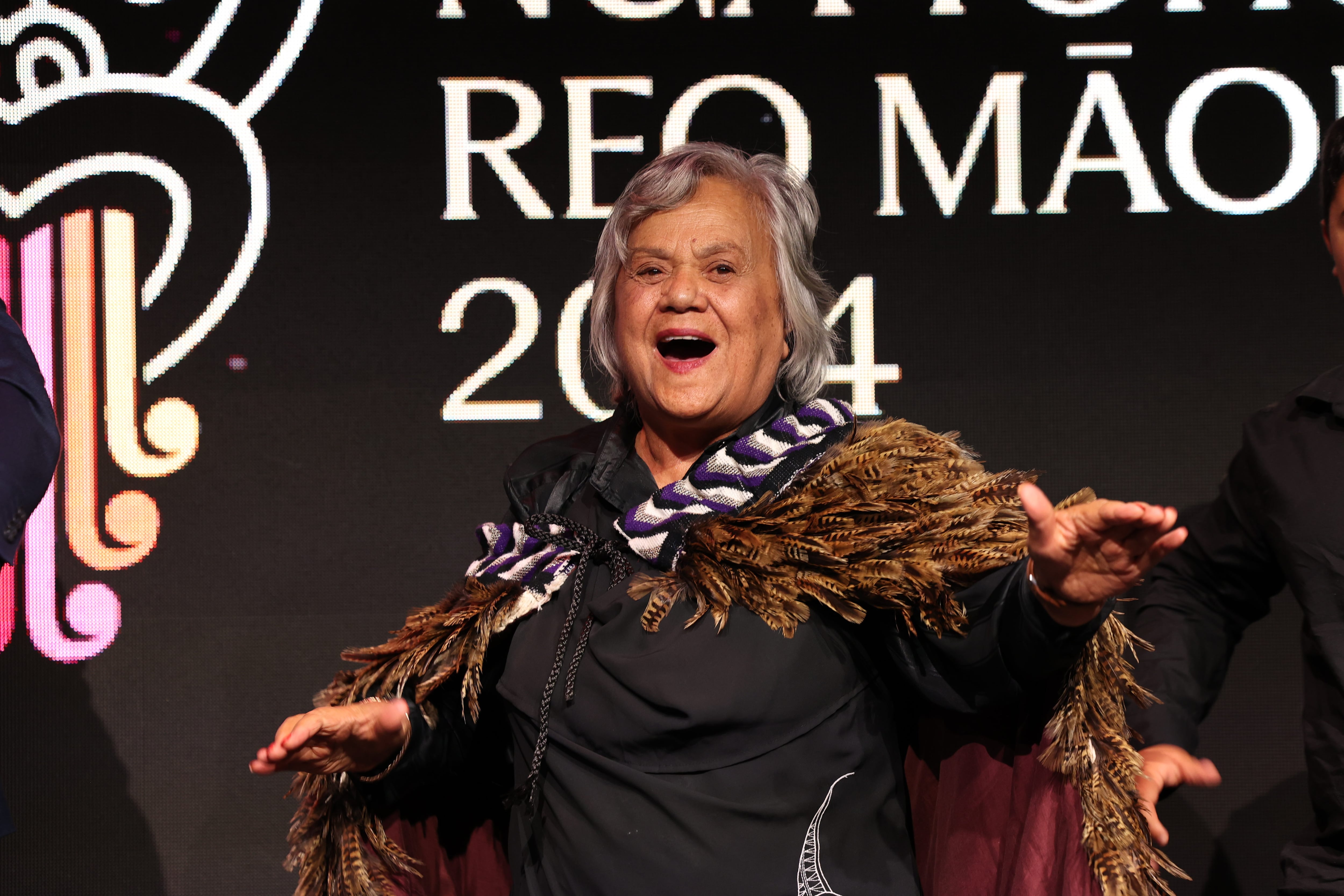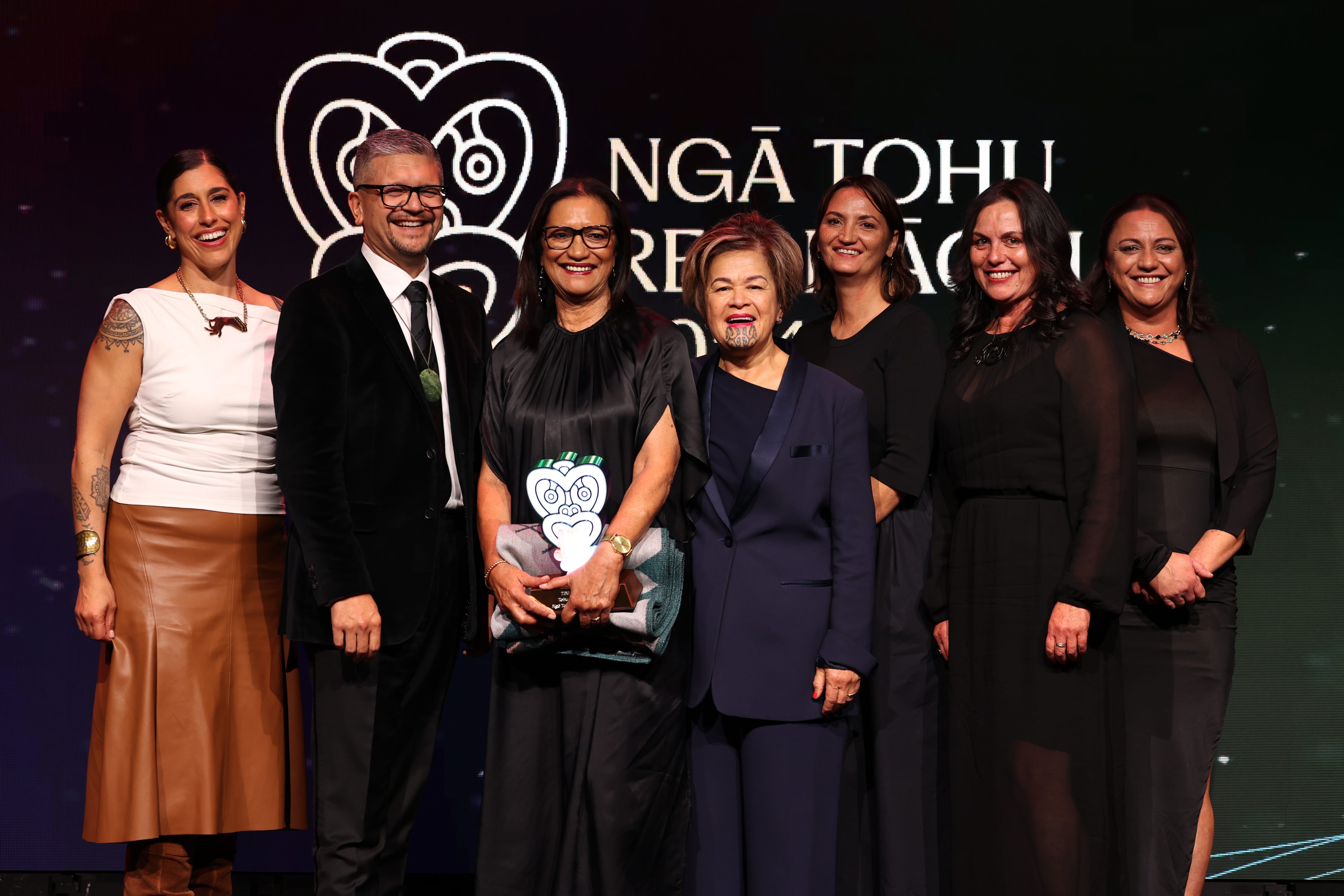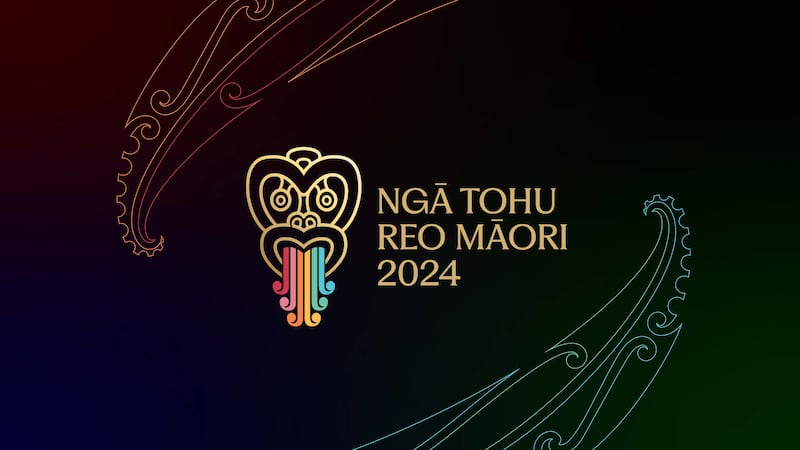A health advocate for Māori, a veteran broadcaster and a kōhanga reo champion walked away from Ngā Tohu Reo Māori with the highest honour of the awards night.

Kahurangi Rangimarie Naida Glavish DNZM. JP (Ngāti Whātua), Tini Molyneux (Ngāi Tūhoe), and Kuini Moehau Reedy (Ngāti Porou, Te Aitanga-a-Mate) have each received the Lifetime Achievement Award, celebrating their significant contributions to te reo Māori spanning over four decades.
It is the first time in the awards’ history that three people have received the honour and a first that all three recipients are wāhine.
This evening, Tākina Wellington Convention & Exhibition Centre hosted Ngā Tohu Reo Māori, with 13 awards handed out to recipients from across Aotearoa.
Kahurangi Naida has been a driving force behind the normalisation and integration of te reo Māori within the healthcare sector. She was made a Dame Companion of the New Zealand Order of Merit (DNZM) in 2018. She reluctantly accepted the accolade but recognised the benefits for her people.
Glavish, who famously sparked a nationwide movement by greeting callers with “kia ora” while working as a phone operator in the 1980s, encourages learners to keep pursuing te reo.
“You have genealogy, a line that can be traced down from the ancestors. You have the language. Your language resides in your blood, in your heart, and the seat of your emotions,” Glavish says.

Kuini Moehau Reedy has been a champion of the kōhanga reo movement since its inception in the early 1980s. Her contributions include waiata reo Māori, which have been integral in revitalising the language. She has dedicated her life to protecting and celebrating te reo, tikanga and toi Māori.
“If you grow up with te reo Māori, you see it, you hear it, and it comes out of the mouth. That’s how you learn the language. It’s not as if you sit and learn the language,” Reedy says.

Tini Molyneux is a veteran broadcaster who played a pivotal role as a Māori affairs reporter for TVNZ in the 1980s. She also fronted Te Karere, working alongside pioneers such as Hone Edwards, Tawini Rangihau, Te Waihoroi Shortland and Wena Harawira. She was raised speaking the Ngāi Tūhoe dialect, and as a result, her work and the language she used were from Rūātoki. She covered Māori events like the foreshore and seabed protests but her most memorable piece of work was leading the coverage of the tangihanga of Te Arikinui Te Atairangikaahu in 2006.
Molyneux is adamant te reo Māori in broadcasting is strong but warns that the language could be lost if people do not use it.
“The aspiration to see our language thrive is within us all as Māori. If we are not persistent in speaking our language, perhaps it might end up like the moa,” Molyneux says.
Te Taura Whiri i te Reo Māori chief executive Ngahiwi Apanui-Barr congratulated all of tonight’s winners. He took the opportunity to reinforce his support for the many people who have fought hard for the language.
“We celebrate 13 recipients who are recognised for their staunch advocacy, innovation, leadership, and vast efforts for te reo Māori. Beyond this, there are huge numbers of other kaupapa that are also doing this mahi.”
Each recipient was awarded a specially designed taonga in the form of the Hei Tiki, created by Vaka. These taonga were made from repurposed and environmentally-friendly material.
I riro i tētahi kaikōkiri i ngā take hauora Māori, i tētahi ika a Whiro i te ao pāpāho, me tētahi toka tū moana o te Kōhanga reo, te tohu nui whakaharahara katoa o te pō whakanui i Ngā Tohu Reo Māori.
Kua riro i a Kahurangi Rangimarie Naida Glavish DNZM. JP (Ngāti Whātua), i a Tini Molyneux (Ngāi Tūhoe), me Kuini Moehau Reedy (Ngāti Porou, Te Aitanga-a-Mate) ngā Tohu Oranga Angitu, e whakanui ana i ā rātou whakaheke werawera mō te reo i ngā whā tekau tau kua hori, neke atu.
He tuatahitanga tēnei i te hītori o ngā tohu kua riro i ngā tāngata tokotoru te hōnore nei, ā, ko te tuatahi tēnei he wāhine te katoa o ngā kaiwhiwhi. I tēnei pō, i tū Ngā Tohu Reo Māori ki Te Whare o Tākina, ā, 13 ngā tohu i tukuna atu ki ngā kaiwhiwhi nō Aotearoa whānui.
Ko Kahurangi Naida tētahi kaiwhakakipakipa i te taunoa me te uru o te reo Māori ki te rāngai hauora. I riro i a ia Te Tohu Kahurangi (DNZM) i te tau 2018. Ahakoa tana horokukū ki te whakaae atu ki te hōnore, i kite ia i ngā hua ki tōna iwi. E akiaki ana a Kahurangi Naida, nāna i tīmata tētahi rangatohe i tana mihi “kia ora” ki ngā kaiwaea i a ia e mahi ana hei kaiwhakahaere waea, kia whai tonu ngā ākonga i te reo.
“He whakapapa tōu e heke mai ana i ngā tūpuna. Kei a koe te reo,” hei tā Glavish.
He pou tokomanawa a Kuini Moehau Reedy o te kaupapa o te Kōhanga Reo mai i tōna tīmatatanga i te pito tōmua o ngā tau 1980. Ko ētahi o ana takoha, he tito waiata kua riro hei rauemi whakaharahara ki te whakarauora i te reo. Kua ngākau titikaha ia ki te tiaki me te whakanui i te reo, i ngā tikanga me ngā toi Māori i tōna ora katoa.
“Mēnā i pakeke ake koe me te reo Māori, ka kitea, ka rangona e koe, ā, ka puta mai i tō waha. Koirā te huarahi ako i te reo. Ehara i te mea ka noho koe, ā, ka ako i te reo,” hei tā Reedy.
He ika a Whiro a Tini Molyneux i te ao pāpāho, ā, i nui āna mahi pūrongo i ngā take Māori mā Te Reo Tātaki i ngā tau 1980. I whakakanohi hoki ia i Te Karere, i mahi tahi hoki ki ngā matakahi maire pēnei i a Hone Edwards, i a Tawini Rangihau, i a Te Waihoroi Shortland, i a Wena Harawira.
I pakeke ake ia i te mita o Ngāi Tūhoe, nō reira, katoa ana kupu me te reo i whakamahia e ia, i ahu mai i Rūātoki. I pūrongotia e ia ngā kaupapa Māori pēnei i te porotēhi mō Ngā Takutai Moana, engari ko te taiopenga whakahirahira rawa ko te ārahi i te pūrongo mō te tangihanga o Te Arikinui Te Atairangikaahu i te tau 2006. E tino whakapono ana a Tini Molyneux e kaha ana te reo Māori i te ao pāpāho, engari ko tāna whakatūpato, ka ngaro te reo ki te kore e whakamahia e te tangata.
“Kei roto i a tātou katoa te hiahia kia tipu te ora o te reo. Ki te kore tātou e kaha ki te kōrero i tō tātou reo, tērā pea ka rite ki te moa,” te kī a Tini Molyneux.
I whakamiha te Tumu Whakahaere o Te Taura Whiri i te Reo Māori, a Ngahiwi Apanui-Barr, ki ngā toa katoa o te pō nei. I tuku ia i āna kōrero tautoko ki te tini tāngata i kaha te whakaheke werawera mō te reo.
I riro i ia kaiwhiwhi tētahi taonga Hei Tiki nei te hanga, ā, i āta whakaritea e Vaka. I waihangatia ēnei taonga ki ngā matū hangarua, tautaiao hoki.

